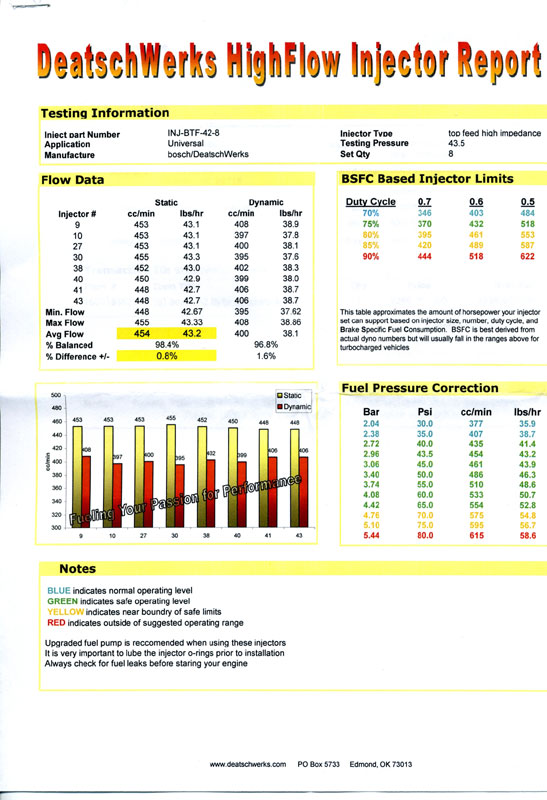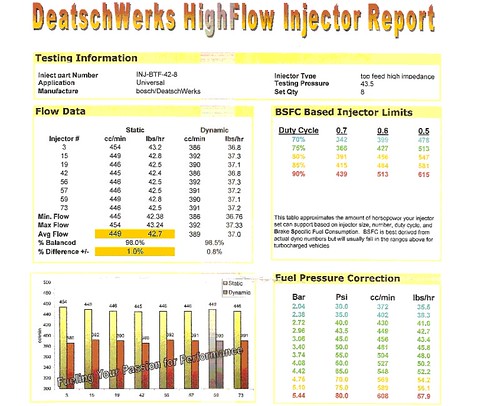Tuning Methodology
Someone brought it up on the forums, and it's a good thing, so I'm reposting it for the sake of completeness on my site.
1. Try to keep tuning sessions as close to repeatable as possible, same gas, same route, same time (like driving to/from work) work great. This way you get approximately the same amount of samples in the same temperature range. If the weather is particularly extreme (super hot, extra humid) take a note of it, expect your values to skew one way.
2. Long steady inputs--I can't stress this enough, this is #1 reason why most people never get their numbers straight. If you get on the throttle--hold it. If you get off throttle, don't half-ass, lift completely--this way it's easy to filter unwanted (transients/not steady airflow) cells. In HPTuners, there's now way to ask for a derivative of anything, so there's no way to know if you're accelerating or decelerating. EFILive has 'filter out if value changed more than X %' capability
3. Warm up the WHOLE car, don't just look at the coolant temperature. Fuel warms up too. If you don't believe me, go scan for a while, and then go fill up with new fuel, and continue scanning, I promise you your trims are gonna go nuts. Fuel temperature affects atomization, which affects how complete is the burn, which affects the resulting AFR. The rule of thumb here is 15 minutes of normal driving before you log for VE.
4. No lugging it in tall gears (5-6th). Laziness gets the best of you, and you end up tooling around at 1500rpm in 6th, give it more gas, it knocks. While it's not a real dangerous knock, but it will show up in your logs, and you might end up pulling timing where you really didn't need it. Avoid doing it in general, not just for tuning, if you need to accelerate, downshift.
5. Be creative -- use the environment. Hills are GREAT for getting the more extreme cells. how else you're gonna get these 20kPa at 4000rpm cells without decelerating? (you can always use a real dyno, like Dyno Dynamics)
6. Be observant, learn the ways of your car. There are things that are particular to every car, and the most seasoned tuner won't notice them, simply because they don't have the milage on your car you do. Use it to your advantage. My car, for example, has random knock 1600-2000 rpm; it's just tight suspension on lousy roads, making things rattle and set of knock sensors. If you give it more throttle and it binds up, then there's no knock, but driving gently makes it rattle. Pure 100octane and lame timing won't cure it either.
7. Organize, label, and take notes on your logs. Temp/pressure/humidity/terrain often explain a lot of goofyness in the logs. once I was chasing what I thought was an intake leak, but it turned out to be that the guy lived in some serious hills. During a 20 minute commute between work and home, his WOT MAP would drop from 100kPa to 93kPa max. I didn't know that, he didn't tell me. It took us a while to sort it out.
8. Tuning is science--don't ever forget about that. Repeatability, changing one thing at the time, taking notes, not falling into routine or assumptions, all these boring things psychotic science teachers tried to drill into your heads in high school--they weren't cool, but they were right, so deal with it.
9. Keep your hardware fresh and clean. If you see AFR scatter more than usual, check your filters. If you see MAP not getting up to where it used to be in the same conditions as before--your cat might be clogged up. If you installed headers and you're tuning for them and it's starting to converge on some new numbers but then out of nowhere they go crazy on you--retorque header bolts, something might have gotten loose after few heat cycles, etc.



